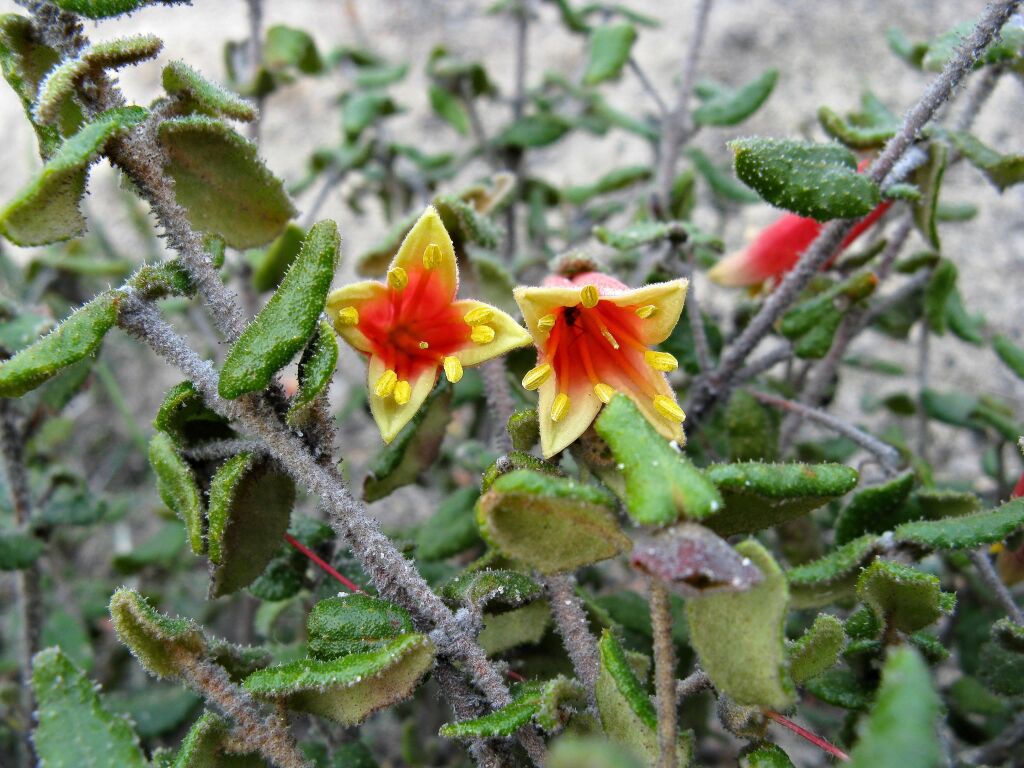Correa reflexa
(Labill.) Vent. Common CorreaErect, spreading, or semi-prostrate shrubs usually to 2 (rarely to 3) m high; branches densely tomentose to loosely floccose. Leaves papery to coriaceous, oblong to broadly ovate or orbicular, apex rounded to obtuse, base rounded to cordate with rounded lobes, margins entire or crenulate, upper surface smooth to scaberulous, glabrous or pubescent, lower surface glabrescent to tomentose, pannose, or floccose. Inflorescence 1–3(–5)-flowered, terminal on lateral branchlets, terminal leaf pair appearing as leaf-like bracts; pedicel 2–6.5 mm long; bracteoles narrowly linear, 3–11 mm long. Flower usually solitary, on branchlets of 1 internode, erect or pendent; calyx hemispherical, 3–6 mm long, truncate or slightly undulate, 4-dentate, sometimes with 4 interlobes, cream- to ferruginous-tomentose; corolla cylindric to trumpet-shaped, 1.5–4.5 cm long, yellowish-green, red, or red with green tips, fused; stamens exserted, filaments widening at base.
LoM, MuM, Wim, GleP, Brid, VVP, VRiv, GipP, OtP, WaP, Gold, CVU, GGr, DunT, NIS, EGL, EGU, WPro, HSF, HNF, OtR, Strz, MonT, HFE, VAlp. Also SA, Qld, NSW, Tas.
Correa reflexa is a widespread and highly variable species in south-eastern Australia. Some varieties intergrade. There are some distinctive local variants that probably warrant formal recognition.
Correa reflexa var. nummulariifolia (Hook.f.) Paul G.Wilson has been erroneously recorded for Victoria in the past. These records were based on misidentified specimens of C. backhouseana.
Duretto, M.F. (1999). Rutaceae. In: Walsh, N.G.; Entwisle, T.J., Flora of Victoria Vol. 4, Cornaceae to Asteraceae, pp. 153–197. Inkata Press, Melbourne.
 Spinning
Spinning


